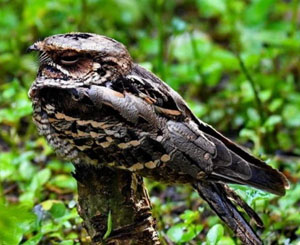
Caprimulgus affinis
Nighthawk, bark-sticking, mosquito-bird,Savannah Nightjar,Allied Nightjar
Features:It particularly likes to eat pests such as beetles, moths and mosquitoes, so it is nicknamed the "mosquito bird".
The nighthawk is a small bird of the family Noctilucentidae. Its upper body is mostly gray-brown, and its two pairs of outer tail feathers are almost pure white, with only a small dark tip, which is clearly visible when flying.The nighthawk often moves alone or in pairs. It is nocturnal and mostly r...
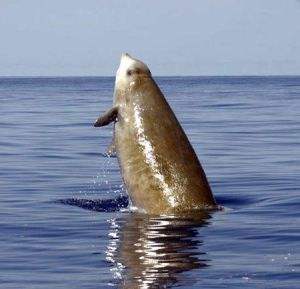
Ziphius cavirostris
Ziphius cavirostris,Cuvier's beaked Whale,Cuvier's beaked whale, goose-billed whale, Cuvier's beaked whale, goose-billed whale, Cuvier's beaked whale
Features:The diving depth champion among mammals, the highest record is 2992 meters
Cuvier's beaked whale, whose foreign name is Cuvier's beaked Whale, is the most widely distributed species in the beaked whale family. They are also known as Goose-beaked Whale and Goose-billed Whale, so named because their head looks somewhat like a goose's head when viewed from the sid...
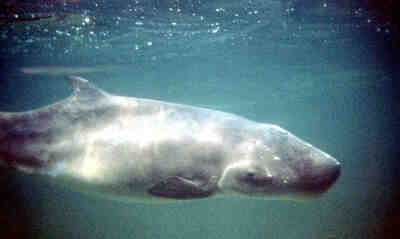
Kogia sima
Kogia sima,Kogia simus (Owen, 1866),Physeter simus Owen, 1866, Dwarf Sperm Whale, Dwarf Sperm Whale, Cachalot nain, Cachalot nain,Cachalote Enano, Cachalote Enano,,Owen's sperm whale
Features:The species was not widely recognized until 1966
Dwarf Sperm Whale, no subspecies.The species of Dwarf Sperm Whale was not widely recognized until 1966, so it was often unclear in the literature before then which species "Kogia" was targeting. No subspecies of the pygmy sperm whale have been found. However, based on sequencing of the mit...
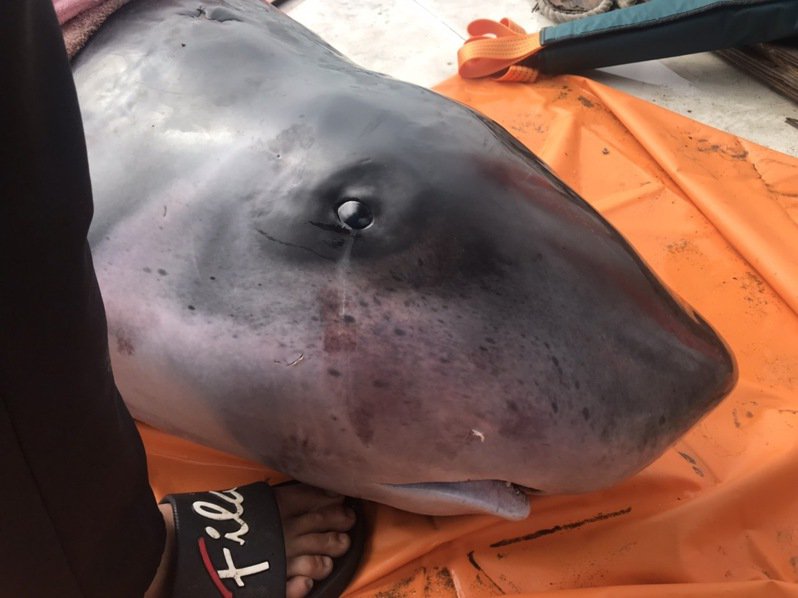
Kogia breviceps
Kogia breviceps,Pygmy sperm whale
Features:The smallest whale
Pygmy sperm whale, foreign name, no subspecies.Pygmy sperm whales move alone or in small groups, sometimes up to about 6 in a group. This species is an oceanic warm-water species. It is timid and slow-moving. It swims at a speed of about 3 miles per hour. The mist column it emits when breathing is u...
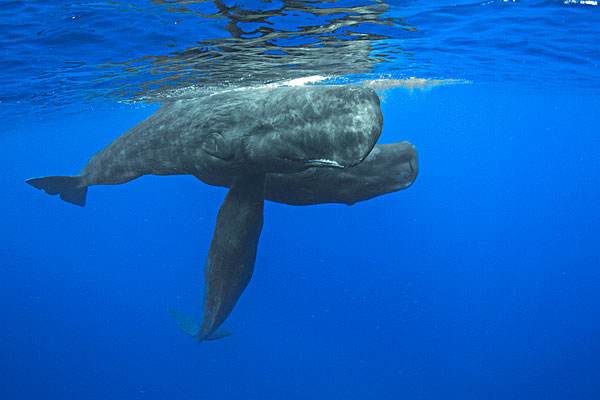
Physeter macrocephalus
Physeter macrocephalus,Sperm Whale, Cachelot, Pot Whale, Spermacet Whale ,Cachalot , Ballena Esperma, Cachalote, Giant Sperm Whale, Kacherat Whale
Features:The sperm whale has the largest brain in the animal kingdom, and its intestinal secretion is the famous "ambergris"
Sperm Whale, with no subspecies, has the largest brain in the animal kingdom.Sperm whales like to live in groups, often with a few male whales and a large group of female whales and calves forming a large group of more than dozens, or even two or three hundred. They migrate north and south every yea...
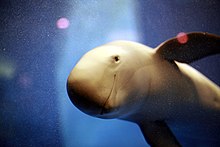
Neophocaena phocaenoides
Neophocaena phocaenoides,Indo-Pacific Finless Porpoise,Delphinus phocaenoides G. Cuvier,, black finless porpoise, Indo-Pacific right porpoise
Features:Also known as the broad-backed finless porpoise
The Indo-Pacific Finless Porpoise has no subspecies.The Indo-Pacific Finless Porpoise is a relatively shy and elusive animal. They do not form large groups. They like to move alone or in pairs, and usually do not form groups of more than 4-5. Most commonly seen in small groups including females and/...
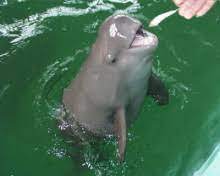
Neophocaena sunameri
Neophocaena sunameri,Narrow-ridged Finless Porpoise,Sand Mingli finless porpoise, narrow-ridged finless porpoise East Asian subspecies, finless porpoise East Asian subspecies, sea finless porpoise
Features:The smallest whale in the world is of course also the smallest toothed whale
The East Asian finless porpoise, also known as the Narrow-ridged Finless Porpoise, is the smallest cetacean and is often mistaken for the Yangtze finless porpoise. The height of its back and the number of tubercles are the main features that distinguish it from the Yangtze finless porpoise and the I...

Neophocaena asiaeorientalis
Neophocaena asiaeorientalis,Yangtze Finless Porpoise,Narrow-ridged Finless Porpoise, Finless Porpoise,Neophocaena asiaeorientalis asiaeorientalis,Yangtze River Porpoise, Narrow-ridged Porpoise Yangtze
Features:The last remaining cetaceans in the Yangtze River
The Yangtze Finless Porpoise was once considered a subspecies of the narrow-ridged porpoise together with the East Asian finless porpoise. It was recognized as an independent species in 2018, which increased the number of cetacean species from 89 to 90. This also marks the addition of another endemi...

Globicephala macrorhynchus
Globicephala macrorhynchus,short-finned pilot whale,Great nosed pilot whale, Great nosed pilot whale
Features:As the name suggests, the short-finned pilot whale has shorter flippers with rounded edges.
Short-finned pilot whale is a warm-water oceanic species.Short-finned pilot whales are most easily confused with other small black fish, such as false killer whales, followed by melon-headed whales and small killer whales. The dorsal fin is the best distinguishing feature.Short-finned pilot whales l...
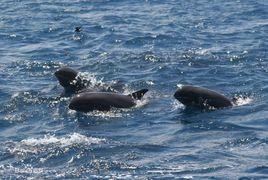
Feresa attenuata
Feresa attenuata,Pygmy Killer Whale, Orque pygmée,Orca Pigmeo,Delphinus intermedius,Small killer whale, small orca, small killer whale
Features:Related to killer whales
The pygmy killer whale is also known as the pygmy killer whale. It is an animal of the genus Pygmy Killer Whale in the family Delphinidae, with no subspecies. The "attentuata" in the scientific name means "wedge" in Latin, referring to the shape of its body gradually becoming thi...

Pseudorca crassidens
Pseudorca crassidens,False Killer Whale, Faux-orque,Orca Falsa,Phocaena crassidens Owen,Black whale, false killer whale, false pilot whale, false killer whale
Features:Similar to killer whales, but smaller in size and all black
False killer whale is the only species in the genus False killer whale of the Dolphin family, and ranks third in size among the Dolphins.False killer whales are fast and active swimmers. When they float, they often lift their entire head and most of their body out of the water; sometimes even their...

Orcinus orca
Orcinus orca,Killer Whale, Orca,Epaulard, Orque, Espadarte, Orca,Orca assassina, killer whale
Features:It is the top of the marine food chain.
Killer Whale is the largest species in the dolphin family, and there is no subspecies.Killer whales are highly social and have a complex social structure. They like to live in groups, ranging from small groups of 2-3 to large groups of 40-50. There are even reports of hundreds of individuals in a gr...
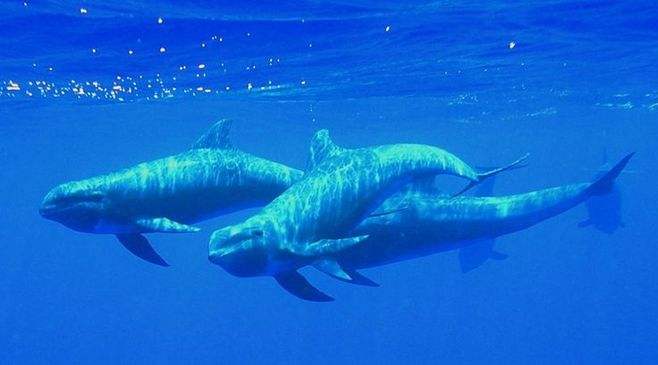
Peponocephala electra
Peponocephala electra,Toothy melon-headed whale, melon-headed dolphin
Features:Actually, the melon-headed whale is a dolphin.
Melon-headed whale, also known as Melon-headed whale, has no subspecies. Its characteristics are similar to those of the genus Orca, but it has more teeth.Melon-headed whales are a highly social species. They often appear in groups of hundreds or even more than 1,000, and the whale groups also inclu...

Grampus griseus
Grampus griseus,Risso's dolphin,Tattoo dolphin, Richter's dolphin, patterned whale, Richter's dolphin
Features:It has unique features such as no beak, no teeth in the upper jaw, the front end of the lower jaw is flush with the front edge of the head, and the blowhole is located on the top of the head.
The gray dolphin is called Risso's dolphin in English, and has no subspecies.The gray dolphin has the habit of swimming in the ocean. Usually there are groups of 10 to dozens of heads, and there are also large groups of hundreds of heads, and sometimes mixed with other types of dolphins. Gray do...

Lagenodelphis hosei
Lagenodelphis hosei,Fraser's Dolphin,Hourglass dolphin, Freund's dolphin, Freund's dolphin
Features:Its appearance is similar to that of the blue-and-white dolphin and the long-beaked dolphin.
The Sarawak dolphin is called Fraser's Dolphin in foreign language, and there is no subspecies.The Sarawak dolphin is a tropical, offshore species, and it usually swims in groups of dozens to hundreds of individuals, and even in large groups of thousands of individuals. They often swim with spot...

Delphinus
Delphinus,common dolphin,Common dolphin
Features:There is a triangular light-colored area in the center of the dorsal fin, and a deep groove on the left and right of the maxillary palate.
Common dolphins are called common dolphins in English. There are two species (long-beaked common dolphins and short-beaked common dolphins), with a total of four subspecies.Common dolphins belong to the order Cetacea, the family Delphinidae, and the genus Delphinus in taxonomy. There are two species...

Delphinus capensis
Delphinus capensis,Long-beaked common dolphin, Common Dolphin,Toothed dolphin, tropical dolphin, long-beaked dolphin
Features:The basic appearance is similar to that of the short-beaked dolphin.
Long-beaked common dolphin, with two subspecies, is a warm-water species.Long-beaked dolphins are social mammals. Sometimes more than 1,000 individuals form a large dolphin group, and a smaller dolphin group can also be composed of 10 to 30 closely related dolphins.At the surface, long-beaked dolphi...
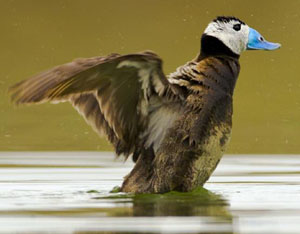
Oxyura leucocephala
Oxyura leucocephala,White-headed Duck
Features:It is recognized as a globally endangered bird species and is the prototype of Donald Duck in the cartoon.
The white-headed hardtail duck is a very typical gregarious water duck. It breeds in Tianshan Mountain in Xinjiang and is occasionally seen in Honghu Lake in Hubei. It is a summer migratory bird in Xinjiang and an occasionally stray bird in Hubei. It mainly forages by diving, and often sticks its he...
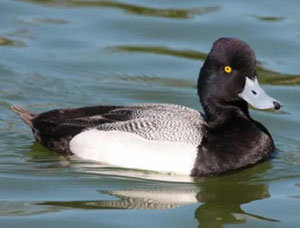
Aythya affinis
Aythya affinis,Lesser Scaup
Features:It rarely sings and is a deep-water bird that is good at diving by folding its wings.
The Lesser Pochard is a migratory bird that forms a flock of 25-50 birds when migrating. Most of the wintering migration flight routes are through the central Mississippi, along Mexico and Florida to the Gulf Coast. Some go to Central America, the Caribbean and northern Colombia, and a few winter mi...
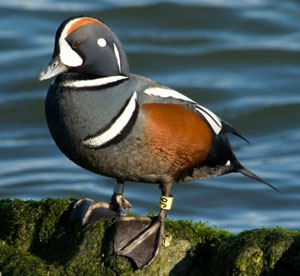
Histrionicus histrionicus
Morning Duck,Histrionicus histrionicus,Harlequin Duck,Harlequin
Features:It has very colorful feathers, resembling the colorful character in Italian pantomime - the harlequin, hence the name.
The ugly duck lives and inhabits streams, deep recesses between rocks and bushes, and tree holes. In spring, it migrates to the northern breeding grounds from May to early June, and in autumn, it migrates to the wintering grounds from mid-to-late September to mid-to-late October, often in small grou...

Stenella clymene
Stenella clymene,Short-snouted Spinner Dolphin,Clementine's dolphin, helmeted dolphin, spotted dolphin
Features:A new species produced by long-term hybridization between the long-beaked spinner dolphin and the striped dolphin
Short-snouted Spinner Dolphin, with no subspecies, is a deep-water species in the ocean.Differences between similar species: The short-beaked spinner dolphin is thicker than the long-beaked (spinner) dolphin (Stenella longirostris), and its dorsal fin is less triangular; in addition, as its name sug...

